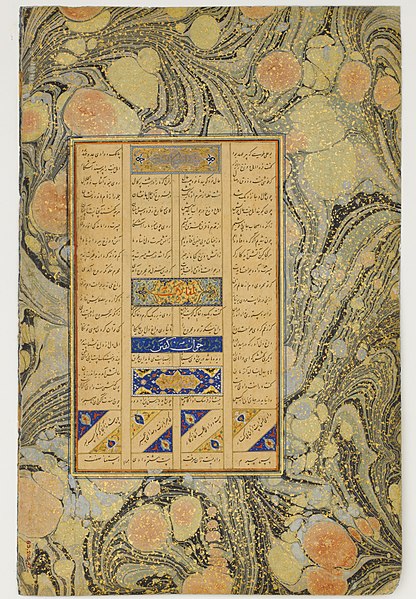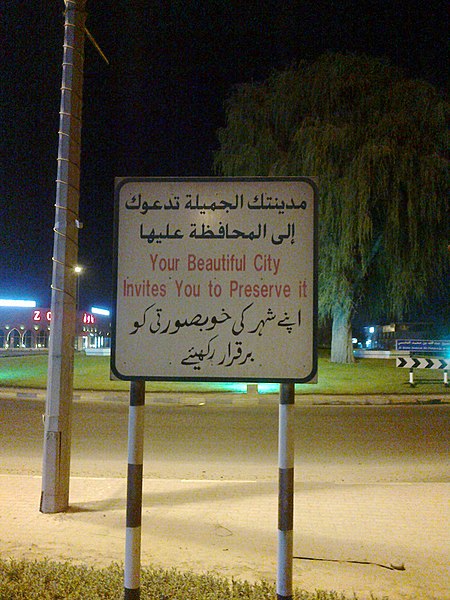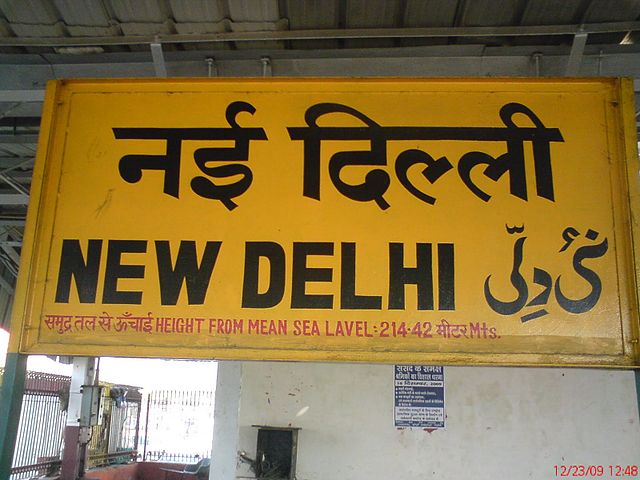Nastaliq, also romanized as Nastaʿlīq or Nastaleeq, is one of the main calligraphic hands used to write the Perso-Arabic script and it is used for some Indo-Iranian languages, predominantly Classical Persian, Kashmiri, Punjabi (Shahmukhi) and Urdu. It is often used also for Ottoman Turkish poetry, but rarely for Arabic. Nastaliq developed in Iran from naskh beginning in the 13th century and remains widely used in Iran, Afghanistan, India, Pakistan, and other countries for written poetry and as a form of art.
Example saying, "خط نڛتعليق" ("Nastaliq script") in Nastaliq. The dotted form ڛ is used in place of س.
Opening page to a copy of Nizami's Khosrow and Shirin with calligraphy by Mir Ali Tabrizi. Tabriz, c. 1410. Freer Gallery of Art
Opening page from a manuscript of Saʿdi's Gulistan copied by Jafar Tabrizi. Herat, 1426/27. Chester Beatty Library
Page from a manuscript of Attar's Mantiq al-Tayr copied by Sultan Ali Mashhadi. Herat, dated 25 April 1487. Metropolitan Museum of Art
Urdu is an Indo-Aryan language spoken chiefly in South Asia.
It is the national language and lingua franca of Pakistan, where it is also an official language alongside English. In India, Urdu is an Eighth Schedule language, the status and cultural heritage of which are recognised by the Constitution of India; and it also has an official status in several Indian states. In Nepal, Urdu is a registered regional dialect and in South Africa it is a protected language in the constitution. It is also spoken as a minority language in Afghanistan and Bangladesh, with no official status.
Opening pages of the Urdu divan of Ghalib, 1821
A trilingual signboard in Arabic, English and Urdu in the UAE. The Urdu sentence is not a direct translation of the English ("Your beautiful city invites you to preserve it.") It says, "apné shahar kī Khūbsūrtīi ko barqarār rakhié, or "Please preserve the beauty of your city."
A multilingual New Delhi railway station board. The Urdu and Hindi texts both read as: naī dillī.
An English-Urdu bilingual sign at the archaeological site of Sirkap, near Taxila. The Urdu says: (right to left) دو سروں والے عقاب کی شبيہ والا مندر, dō sarōñ wālé u'qāb kī shabīh wāla mandir. "The temple with the image of the eagle with two heads."








